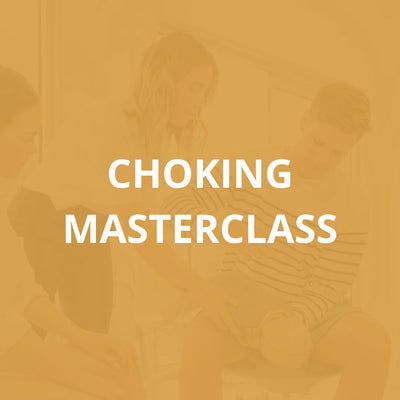12 (First Aid) Tips of Christmas
My paediatric emergency nurse said to me…….
1. Burns
The first aid management for all burns, is to run the burn under cool running water for 20 minutes. The water doesn’t need to be freezing cold, just cool. Complete the cooling as soon as possible. The sooner the better but the cooling can be done up to 3 hours after the injury. The cooling stops the skin from continuing to burn. Don’t put ice, burn creams, toothpaste, egg whites or anything else on a burn. Only cool running water. Apply a non stick dressing (or glad wrap) over the burn after the 20 minutes of cooling is complete.
2. Snake bites
• Follow DRSABCD
• Lay the casualty down, provide comfort and reassurance. Encourage them to STAY STILL.
• Apply a pressure immobilisation bandage using the following technique: Apply a firm heavy elasticised roller bandage just above the fingers or toes and work your way upwards on the limb. Wrap the bandage past the snakebite and as far up the limb as possible. Ensure the bandage is applied firmly but not so tight that it hinders blood circulation
• Splint the bandaged limb
3. Choking
If a child has an ineffective cough or has stopped breathing, call an ambulance (000) and immediately start choking first aid.
Position the child over your lap facing down or lean the child forward.
Give five sharp back blows with the heel of your hand between the shoulder blades. In between each back blow, check to see if the object has been dislodged and if the child is breathing.
If the back blows are unsuccessful, turn the infant onto their back. If an older child is lying down, also turn them onto their back.
Give five chest thrusts using two fingers (infant) or the heel of your hand (child), keeping your hand in contact with the chest at all times. For a chest thrust, position your hand or fingers over the same area you would use for CPR compressions (the lower half of the sternum or 'breast bone').
After each chest thrust, check to see if the object has been dislodged.
If the blockage has not cleared, continue to alternate between five back blows and five chest thrusts (steps 1 to 4 above) until the ambulance arrives.
If at any time the child becomes unconscious, call an ambulance and start CPR.
The management of choking significantly depends if the child has
4. Bee Stings
Do not use tweezers to remove the sting; bees leave behind a sac of venom, and if you try to use tweezers you will release more venom from the sac
If the stinger is still in the skin, gently try to remove it by scraping it carefully from the side with the edge of a firm object, such as a finger nail or credit card – flicking the sting out as soon as possible to reduce the amount of venom injected
When you have removed the sting, wash the affected area with soap and water and dry the area gently
Apply an ice pack and monitor for signs of allergy or anaphylaxis.
5. Drowning
Always supervise children around water.
It only takes a few seconds for a child to drown in a few centre metres of water.
There are a number of drowning hazards in addition to pools, oceans, lakes and rivers. These include; the bath, buckets in backyards, eskys, rivers, lakes, dams, troughs, dog bowls, fish ponds etc.
Remember follow DRSABCD for a drowning victim.
6. CPR
Follow DRSABCD
If a person is unconscious and not breathing normally, they need CPR.
Ensure the person is on a firm flat surface.
Push down 1/3 of the chest wall at a rate of 100-120 compressions per minute. Ensure the chest is rising all the way up in between each compression.
Delivering 2 breaths: 30 compressions.
7. Helmets
Every time. No exceptions.
Wearing a correctly fitted helmet can reduce the child’s risk of sustaining a serious head injury by 90%. Ensure the child has a helmet that meets the Australian Standards (look for a sticker stating it meets the Australia Standard - AS/NZS 2063).
8. Button batteries
If you suspect a child has swallowed a button battery, call an ambulance (000) or go to your nearest hospital emergency department immediately.
Be mindful of button batteries in new toys this Christmas.
Button batteries can also be found in keys, remote controls, calculators, musical greeting cards, watches and kitchen scales.
Button battery injuries can be catastrophic if not treated immediately. If you think a button battery has been swallowed, do not wait for symptoms to appear before calling an ambulance.
9. Driveway safety
Driveways are dangerous places for children. Sadly multiple children are killed and even more seriously injured in driveway accidents every year in Australia.
In 85% of cases, the driver does not know that a child is close to the vehicle; they think they are being looked after elsewhere.
All cars have a blind spot – some up to more than 15 meters behind the vehicle – which can make it difficult to see a child. This means that any car can be involved in a driveway run over, not just larger vehicles such as four wheel drives, vans and trucks.
Follow DRSABCD.
To assist in making your driveway safer, ensure you supervise, separate and see.
10. Fever - under 3 months of age
Remember, if a baby under 3 months of age has a fever (body temperature over 38 degrees Celsius), they need to be seen urgently by a doctor. I recommend heading to the nearest Emergency Department. The gold standard for measuring a baby’s temperature is using a digital thermometer under their arm (axilla).
11. Poisons
Call the Hotline – 13 11 26 24/7 for advice.
If a person has had a poison ingested, injected, splashed, inhaled phone the poisons hotline for advice. Don’t induce vomiting for poisons.
If they appear unwell call 000.
12. First Aid Kit
Ensure you have an up to date and adequately stocked first aid kit in your home, the car and on holidays. Parents were always asking us what to add into a first aid kit, so we used our medical knowledge to create the perfect kit.
To learn more- www.rhythmfirstaid.com.au
The quick thinking of Warrnambool parents Lucy and Pat Mahony saved their 18-month-old son Ollie from serious scars for life after he pulled a cup of coffee onto himself.
How do I check my baby’s temperature? 🤒 What is the best way to check a baby’s temperature? There are so many different types and brands of thermometers out there. What thermometer should I buy?
We're here to answer all your questions!
When our little loves are in pain, we want nothing more than to help them. This guide discusses common pain reliving medications that we can use to help alleviate their pain, as well as when and why we use them.









